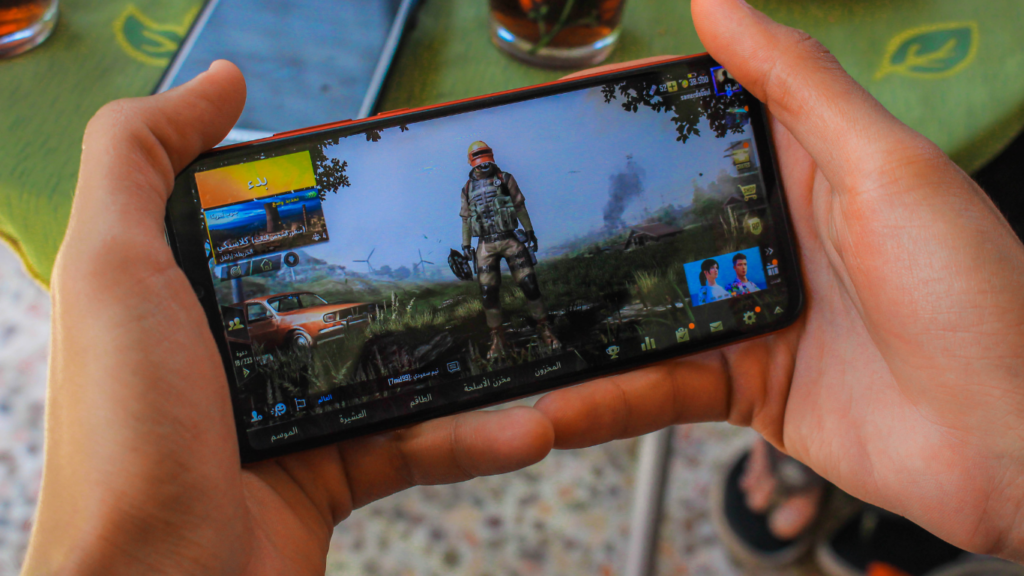As a seasoned blogger, I’ve witnessed firsthand the transformative power of technology in shaping the landscape of mobile gaming. Augmented Reality (AR) has emerged as a game-changer, revolutionizing how players interact with virtual worlds through their mobile devices.
The fusion of digital elements with real-world environments has unlocked a new realm of immersive experiences, blurring the lines between fantasy and reality. In this article, I delve into the profound impact of AR on the mobile gaming industry, exploring how this innovative technology has redefined user engagement and gameplay dynamics.
From enhancing social interaction to providing a truly interactive gaming experience, AR has paved the way for a new era of mobile entertainment. Join me as we unravel the captivating world of AR in mobile gaming and discover the endless possibilities it brings to both developers and players alike.
Understanding Augmented Reality in Mobile Gaming
Augmented Reality (AR) in mobile gaming refers to technology that overlays digital elements like images, sounds, or text onto the real-world environment as seen through a device’s camera. This blend of virtual and physical components enhances players’ perceptions of reality and creates an engaging experience.
In AR mobile games, players interact with virtual objects or characters placed within their physical surroundings. These games take advantage of device capabilities to offer a distinctive gaming experience that merges the virtual with the real world, encouraging active exploration and engagement.
The immersive quality of AR in mobile gaming fosters a new level of interactivity and social connection among players. By overlaying digital elements onto the real world, AR games promote social interaction, allowing players to collaborate on challenges or compete in shared spaces.
Moreover, AR technology opens up endless creative possibilities for game developers. From location-based games that encourage exploration to immersive storytelling experiences that unfold in real-time, the potential for innovative gameplay in AR mobile gaming is vast.
In summary, understanding the impact of Augmented Reality in mobile gaming highlights its transformative effect on player interactions and gameplay dynamics. By merging digital content with the real world, AR technology enhances user engagement and offers exciting new opportunities for both developers and players.
The Advantages of Implementing Augmented Reality
- Enhanced Immersion: Augmented Reality (AR) immerses players by blending digital elements with the real world, creating a more engaging and interactive gameplay experience that captivates users.
-
Increased User Engagement: AR technology encourages players to explore their environments and interact with the game in novel ways, fostering a deeper connection to the gameplay and enhancing overall enjoyment.
Enhanced User Experience
Enhancing the user experience is a primary advantage of implementing Augmented Reality in mobile gaming. By overlaying digital elements onto the real world, AR creates a seamless blend of virtual and physical environments.
This integration results in a more immersive and interactive gameplay experience for users, elevating their overall satisfaction and enjoyment.
Increased Engagement and Interactivity
Augmented Reality in mobile gaming significantly boosts user engagement and interactivity by allowing players to interact with virtual elements in real-world settings. This hands-on approach not only captivates players but also fosters social connections as they collaborate and compete within shared AR spaces.
The dynamic and interactive nature of AR games keeps players engaged for longer durations, leading to a more fulfilling gaming experience.
Challenges and Limitations of Augmented Reality in Mobile Gaming
Exploring the realm of Augmented Reality (AR) in mobile gaming unveils a spectrum of opportunities coupled with challenges and limitations that shape the landscape. Embracing AR technology in gaming is not devoid of hurdles, and recognizing these obstacles is essential for stakeholders navigating this innovative terrain.
- Hardware Constraints: As I delve into the world of AR in mobile gaming, one notable challenge is the reliance on advanced hardware capabilities. AR demands robust processing power and sophisticated sensors to seamlessly integrate virtual elements into the real world. This dependency on high-end devices may limit the accessibility of AR games to a broader audience, posing a barrier to widespread adoption.
- Technical Complexity: Integrating AR features into mobile games requires intricate technical expertise and resources. Developers face complexities in aligning virtual objects with real-world environments and ensuring a smooth and reliable AR experience across various devices. The intricate nature of AR development may lead to longer production cycles and higher implementation costs, hindering the rapid deployment of AR-enhanced games.
- User Acceptance and Behavior: While AR holds immense potential for immersive gameplay, user acceptance and behavior present significant challenges. Some players may find the blending of virtual and physical worlds disorienting or intrusive, impacting their overall gaming experience. Understanding user preferences and behaviors in the context of AR gaming is crucial for designing experiences that resonate with diverse gaming audiences.
- Privacy and Security Concerns: The utilization of AR technology raises concerns about privacy and data security. Collecting and processing real-world data for AR applications necessitates robust privacy measures to safeguard user information and prevent potential data breaches. Ensuring transparent data handling practices and addressing privacy concerns are imperative to build trust among players engaging in AR-based gaming experiences.
- Physical Environment Limitations: The seamless integration of AR content with the physical environment is contingent on various factors such as lighting conditions, spatial constraints, and environmental dynamics. Adverse lighting conditions or cluttered surroundings may hinder the accurate placement of virtual objects, impacting the overall AR experience. Overcoming environmental limitations requires adaptive technologies and design strategies to enhance AR usability in diverse settings.
Navigating the landscape of AR in mobile gaming entails embracing the opportunities while acknowledging and addressing the associated challenges and limitations. By fostering innovation, technical prowess, and user-centric design approaches, stakeholders can propel the evolution of AR gaming and unlock its full potential in captivating and engaging players in interactive digital experiences.
Successful Implementations and Case Studies
Exploring successful implementations and case studies of Augmented Reality (AR) in mobile gaming reveals the practical applications and benefits of this innovative technology.
- Pokémon GO: The groundbreaking game Pokémon GO revolutionized mobile gaming by seamlessly integrating AR with real-world locations. By overlaying Pokémon characters on the physical environment, players engaged in a unique gaming experience that encouraged exploration and social interaction.
- Harry Potter: Wizards Unite: Another notable example is Harry Potter: Wizards Unite, which transports players into the wizarding world using AR technology. Players cast spells, discover magical creatures, and collaborate with others in augmented reality, enhancing the sense of immersion and camaraderie among fans.
- Ingress: Niantic’s game, Ingress, blends AR with location-based gameplay, challenging players to control virtual portals in the real world. This integration of AR and geolocation data offers a dynamic gaming experience that blurs the lines between virtual objectives and physical landmarks.
- Minecraft Earth: Minecraft Earth brings the beloved building game into the real world through AR, allowing players to construct and explore creations in their surroundings. The AR capabilities of Minecraft Earth enable players to interact with their builds in real-time, fostering creativity and collaboration.
- Jurassic World Alive: Jurassic World Alive engages players in capturing and battling augmented reality dinosaurs in various locations. By leveraging AR technology, players can experience the thrill of encountering virtual dinosaurs in their everyday surroundings, adding excitement and adventure to mobile gaming.
These successful implementations showcase how AR enhances gameplay experiences, fosters community engagement, and pushes the boundaries of creativity in mobile gaming. By immersing players in interactive augmented realities, these games demonstrate the potential for AR to revolutionize the way we experience entertainment on mobile devices.





